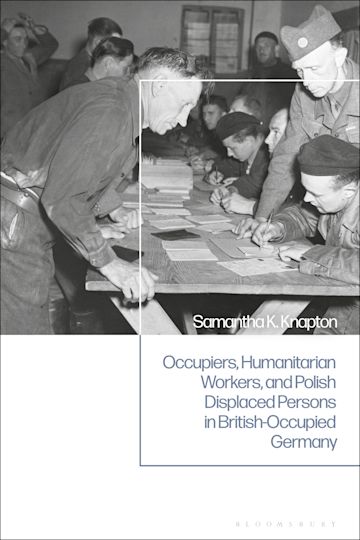
January 27, 2023, by ahzsa
Samantha Knapton’s New Book on Displacement, Occupation and Humanitarianism
Dr. Samantha Knapton’s new book on the history of migration and displacement in post-WW2 Europe has just been published with Bloomsbury Press. The author, who is one of the new staff in the department, had this to say about the work:
“At the end of the Second World War, up to 60 million displaced persons (DPs) were on the move throughout Europe. Jointly the responsibility of Allied governments and the newly created United Nations Relief and Rehabilitation Administration (UNRRA), they were sorted into transit and assembly centres and awaited their future to begin. Polish DPs were the largest displaced group across allied-occupied Germany, the majority of which were in the British zone of occupation, but confronted with significant border changes and a new Soviet-backed government recognized by the Allies many were unwilling to go ‘home’.
My work argues that the concepts of migration and displacement are often separated from the construction of international humanitarianism and the process of (military) occupation. Yet, between 1945 and 1951 these victims of war became the joint responsibility of humanitarian workers (‘carers’) and military officials (‘protectors’) in occupied Germany. The everyday experiences of clothing, feeding, sheltering, and transporting these DPs were shared by those on the ground implementing policies. Policies which were largely created during wartime for peacetime purposes by those who would never actually experience their effects. Occupiers, Humanitarian Workers, and Polish Displaced Persons in British-occupied Germany uses the voices of those ‘in the middle’ (welfare workers, liaison officers, and military officials) to understand experiences of Polish DPs in British-occupied Germany and the effects of ad-hoc policy implementation on post-war Anglo-Polish relations and international humanitarianism. Through a combination of official records and personal collections from diaries and memoirs to oral histories and fictional works, my work combines the top-down and bottom-up perspectives by providing a glimpse at those working in between and their impact on the post-war world.”
No comments yet, fill out a comment to be the first

Leave a Reply